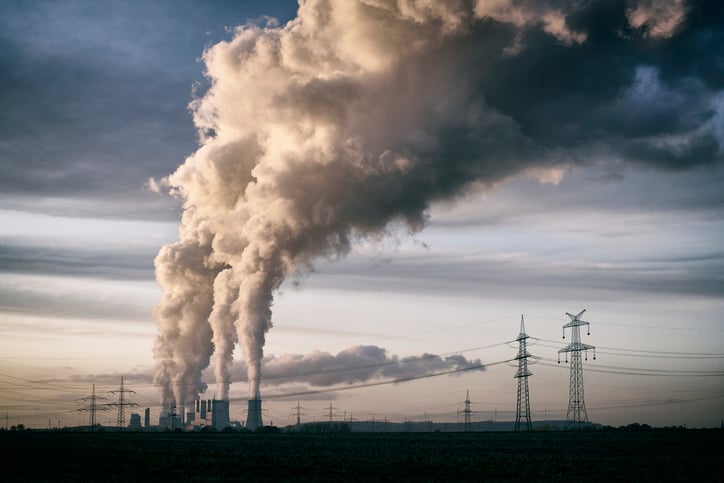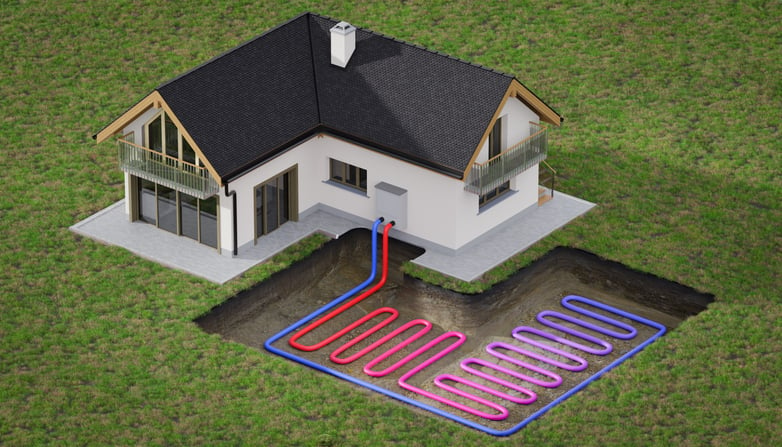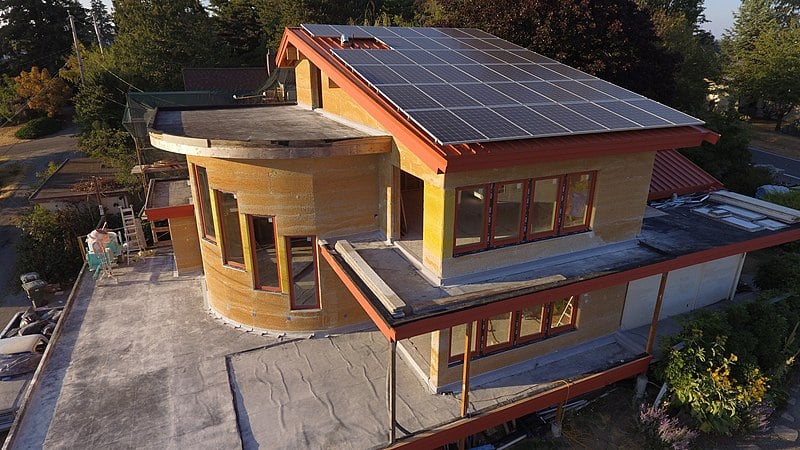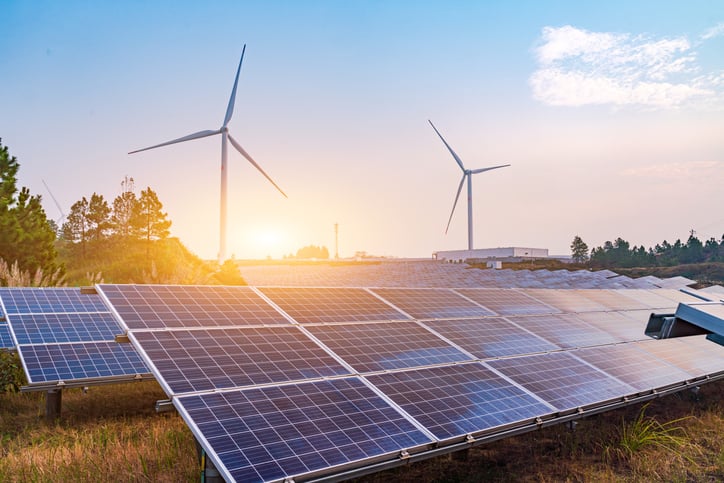
The transition to green construction is set to accelerate in 2023.
World governments and industry leaders are (finally) beginning to get more serious about sustainability. With climate change worsening, global conflict raising concerns over energy security, and billions of dollars flowing into green infrastructure this year, construction is well positioned to lead the charge toward mass-decarbonization in the coming months and beyond.
In this article, we will explain the growing need and demand for sustainable construction. We will also explore three sustainable building trends that are poised to see the most growth over the coming year.
Are we doing enough to combat climate change? Will 2023 be the year that construction goes green?
Read on to find out.
Jump Ahead:
- Why Construction Needs to Become More Sustainable
- The Demand for Sustainable Construction
- Why 2023 is the Year Construction Becomes More Sustainable
a. How the Inflation Reduction Act Incentivizes Green Construction
b. Renewable Energy Rising
- Three Sustainable Building Trends to Watch in 2023
a. Geothermal Heat Pumps
b. Sustainable Building Materials
c. Wind and Solar
- Barriers to Sustainable Construction
Why construction needs to become more sustainable
In an era defined by crisis, climate change is by far the most dire. How we choose to respond to it will quite literally determine the future of all life on Earth.
The scale of the problem defies comprehension. We have emitted roughly 1.5 trillion tons of CO2 since the first industrial revolution, warming the planet by 1° Celsius. Though this may seem like a trivial uptick, it has caused a worldwide crescendo in the frequency and destructive power of extreme weather events and natural disasters within our lifetimes.

The bad news is we’re still not doing enough. A recent report from the University of Hamburg warns that we are on course to breeze past the 1.5°C global warming benchmark set by the 2015 Paris Climate Accords. If we don’t act fast, the United Nations predicts the planet will warm by 3°C by end of century—a scenario of cascading impacts that would include deep droughts, extensive heatwaves, and rising seas that would devastate coastal cities, leave entire regions uninhabitable, and cause the extinction of whole species.
The good news is that the construction industry has a lead role to play in averting this outcome. Construction consumes 36% of the world’s fossil fuels and produces 39% of global CO2 emissions. A big chunk of this pie comes from the embodied carbon of building materials. Steel production accounts for 8% of global carbon emissions, with another 8% coming from the production of concrete. Meanwhile, our cities—set to explode in population in the coming decades—consume 78% of the world’s energy and contribute 60% to global greenhouse emissions, according to the UN.
While construction cannot solve the complex problem of climate change by itself, there are many things the industry can do right now to shrink its sizeable carbon footprint and help the built environment become more sustainable—from embracing green building standards to switching to renewable construction materials and green rooftops.
The demand for sustainable construction
The climate crisis is dire, but there are reasons to be optimistic.
For starters, it’s clearer every day that people want a more sustainable way of doing things. In fact, roughly 85% of consumers have a preference for sustainable products and services, a third of whom are willing to pay more for them, according to a 2021 survey by Simon-Kucher & Partners. This carries over into people’s desires for the built environment: Nearly two-thirds of real estate agents nationwide reported a boost in sales when energy efficiency was mentioned in their listings, according to a 2021 report by the National Association of Realtors.

Sustainability is also increasingly a top priority in the business world, including in construction, where 47% of executives identify it as a source of major concern. Here are some other key takeaways from recent surveys of corporate leaders across multiple industries conducted by Deloitte and a partnership between Conservation International and We Mean Business Coalition.
- 75% of CEOs said their organizations have increased sustainability investments over the last year.
- 61% say climate change will have a “high” or “very high” impact on their company’s strategy and operation over the next three years.
- 92% of leaders see long-term decarbonization as a high-priority.
The demand for sustainability is there. The question is: Is the construction industry ready to supply it?
Why 2023 is the year construction becomes more sustainable
Slowly but surely, construction and other industries are shifting toward sustainability, and the stage is set to see a worldwide acceleration of the trend this year.
A big reason why is that governments worldwide are finally beginning to take serious action toward achieving the shared goal of net zero carbon emissions by 2050.
How the Inflation Reduction Act incentivizes green construction
In the US, an injection of funding from the Biden administration’s Inflation Reduction Act (IRA)—hailed as the most significant climate investment in American history—is set to kick the green transition into higher gear in 2023.
Signed into law Iast summer, the IRA allocates $369 billion for climate related programs over the next decade—including $5 billion to accelerate the construction industry’s adoption of green building materials. A major goal of the legislation is to speed up mass decarbonization by jumpstarting the construction of cleaner energy grids and electric transportation infrastructure.
This unprecedented wave of federal investment in climate change solutions is likely to spark a boost in sustainable building projects nationwide, beginning this year. Why this year? Many of the funds—which come in the form of loans, grants, and tax incentives—were made available for the first time to a wide array of eligible public and private entities at the start of 2023.
For example, American consumers can now offset the cost of solar panels and geothermal heat pumps with a new set of tax credits provided by the IRA. Another example is a $2,500 tax credit for the construction of energy efficient homes. A more thorough breakdown of the funds and who is eligible to receive them can be found in a guidebook released by the White House this January.
Other nations are also speeding up their shift to sustainability with climate-focused actions of their own, including the European Union’s REPowerEU plan, Japan’s Green Transformation program, a recent $4 billion investment in green energy by India, and China’s latest Five-Year-Plan.
Renewable energy rising
These actions by world governments are part of a larger trend in sustainable growth, particularly in the realm of green power.
In 2022, governments across the globe increased their spending on renewable energy projects by more than $500 billion from the previous year. Indeed, global investments in low-cost renewables outpaced fossil fuel spending for the first time in history last year, reaching a record-shattering total of $1.2 trillion invested worldwide since the beginning of the COVID-19 pandemic, according to the International Energy Agency.
The war in Ukraine has accelerated the transition to wind and solar even further over the last year as nations seek to reduce their dependence on Russian oil and gas. One result is that global renewable energy between now and 2027 is expected to grow 30% more than was originally forecast in 2021, according to the IEA’s Renewables 2022 report—which goes on to predict that by 2025, renewables will overtake coal as the globe’s largest source of electricity.
“The world is set to add as much renewable power in the next 5 years as it did in the previous 20 years,” said IEA Executive Director Fatih Birol. “This is a clear example of how the current energy crisis can be a historic turning point towards a cleaner and more secure energy system.
The sudden growth in the renewable energy sector bodes well for the construction companies and skilled tradespeople that will build and maintain these projects in the years to come. Indeed, the IEA forecasts that by 2030, renewable energy technologies will grow to a $650 billion a year industry, with green sector jobs like wind turbine technicians and solar photovoltaic installers climbing from 6 million to 14 million within the same timeframe.
Are these positive developments enough to avert a global climate catastrophe? We’ll discuss that in a moment.
For now, let’s take a look at a few upward trends in the world of sustainable building.
Three sustainable building trends to watch in 2023
Sustainability is on the rise across the board but there are a few areas that are most likely to see significant growth over the next year. Let’s dive in.
Geothermal heat pumps
Geothermal heat pump sales have been steadily climbing worldwide, and starting this year, they’re getting a shot in the arm from the US government.
January saw the extension of a tax credit for residential geothermal installations from 26% to 30% until 2032. And in February, the US Department of Energy announced up to $74 million in funding for pilot projects that demonstrate the effectiveness and scalability of geothermal heat pump technology within different geologic settings.

Geothermal heat pumps use energy drawn from beneath the earth’s surface to heat buildings during the winter and cool them during the summer. According to the Environmental Protection Agency, they are the number one most energy efficient, eco-friendly, and inexpensive heating and cooling systems in existence.
The sector has been experiencing rapid growth lately, according to the IEA, with worldwide geothermal heat pump sales up 13% in 2021. The European Union leads the pack, with sales of residential geothermal heat pumps growing by 35% within that same timeframe. Sales were also up 15% in the US, followed closely by Japan at 13%. A viable alternative to oil and gas, geothermal heat pumps have become even more popular in Europe over the last year as Russia’s invasion of Ukraine has destabilized fossil fuel energy security in the region.
This technology has a big part to play in helping us reach net-zero emissions by 2050, and recent developments at home and abroad are shaping up for 2023 to be a strong year for those in the geothermal heat pump business.
Sustainable building materials
From the explosion in cross-laminated timber to recent statewide incentivization of green concrete, the board is also set for sustainable building materials to grow over the next year.
There are many green building materials on the market today that are markedly less harmful to the environment than steel and concrete—many of them capable of actually absorbing carbon rather than emitting it. One of the most exciting materials to keep an eye on this year is hemp, an easy-to-grow plant that is a primary ingredient in hempcrete. Hempcrete is a biodegradable material, made from a blend of hemp fibers, lime, water, and other substances like sand and pozzolans. Hempcrete is incredibly lightweight, a great insulator, and is reportedly more resistant to fire than any other material on the market.

The Highland Hemp House, a home in Bellingham, Washington made out of hempcrete installed by Idaho-base company Hempitecture. (source: Wikimedia Commons)
Though often hampered by legal red tape, hemp has been having a moment in recent years: The material was approved for US residential codes in 2022. What’s more, business appears to booming, as exemplified by Idaho-based hemp-insulation company Hempitecture, which has reported year-over-year doubles in sales since launching in 2018. Federal support is also better than ever. Last summer, researchers at Texas A&M received a $3.74 million grant from the USDOE to develop homes 3D printed with hempcrete. The IRA has also invested billions of dollars into developing hemp and other renewable materials over the next decade.
“Overall, the stars are aligning for hemp building materials and fiber hemp in 2023,” writes Jean Lotus for HempBuild Magazine.
Wind and solar
The growth of wind and solar power is set to remain steady in 2023.
The Energy Information Administration (EIA) forecasts that total US power generation from wind and solar will climb to 16% this year, up from 14% last year and 8% in 2018. Though the rate of growth is not expected to change from previous years, the EIA says the increase in capacity willl come from new wind and solar projects scheduled to come online in 2023.

Cheaper than oil or gas, wind and solar have experienced rapid growth in recent years. At the end of 2022, solar generated about 74 gigawatts of electrical power in the US, triple the capacity from 2017—the EIA expects another 63 GW to be added by the end of 2024. Meanwhile, wind power in the US has grown by more than 60% to about 143 GW of capacity, according to the EIA. It’s a similar story in other parts of the world: In Europe, solar power has doubled since 2018, and is expected to triple in the next four years.
One of the projects in the US that may see some forward momentum this year is a massive offshore wind farm in the Gulf of Mexico that could produce enough power for 1.3 million homes—though the National Congress of American Indians is requesting the project be stalled in order to conduct a more thorough environmental assessment.
Barriers to sustainable construction
While there is cause for optimism on the climate front, there are also plenty of reasons to remain deeply concerned.
Simply put: We need to do more.
Global spending on renewable energy reached $1.4 trillion in 2022, a 10% increase from 2021. This is an exciting development to be sure, but even so, fossil fuels still account for 80% of the globe’s energy. As of this writing, most of the world’s energy still comes from oil (29%), coal (26%), and natural gas (23%), with wind and solar trailing far behind at a mere 2%, according to the Energy Technology Perspectives 2023 report by the IEA.
The construction and manufacturing industries' longstanding shortage of skilled labor is also proving to be a stumbling block to the green transition. The IRA is expected to create 537,000 jobs a year over the next decade, but industry leaders are expressing concerns they will be unable to fill them, according to a recent report in Reuters. Meanwhile, current concentrations of green manufacturing in China may yet prove to be chokepoints in already vulnerable global supply chains. Rising prices will also be a barrier to a green transition in the coming years, the IEA predicts. Stronger and more diverse supply chains will need to be built if we hope to clear these hurdles in the years to come.
Overall, as the IEA points out in its latest Tracking Buildings report, the construction industry is “not on track” to meet the international goal of net-zero carbon emissions by 2050. Getting there will require more robust reductions of carbon emissions in every segment of construction workflows and supply chains; mass decarbonization of building operations; widespread green renovations; the adoption of green building codes and standards, like LEED; better coordination between green buildings and the new forms of infrastructure they necessitate; more forward-looking climate policies; and even greater investments in energy-efficient and sustainable technologies. Indeed, the IEA estimates that we must triple global renewable energy investments by 2030 to around $4 trillion in order to reach net-zero emissions by 2050.
Bottomline
We still have a long way to go but building a greener future for the planet is still possible if we act now. There are plenty of barriers in our path, but what is a barrier if not something to be overcome?
Will 2023 be the year that construction goes green? The only real answer—for this year and every one that follows—is that it has to be. The starting gun has long since been fired. And the clock is ticking.